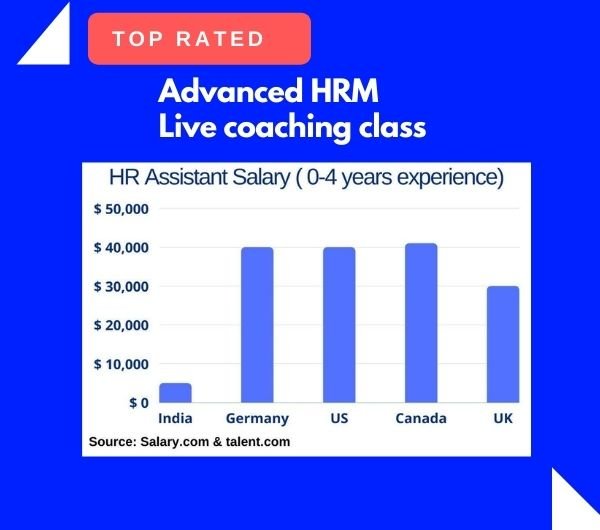Important Human Resource definitions
Important Human Resource definitions
We are asked for concise definitions of human resource management subjects on a daily basis. While not a comprehensive list of significant terms and subjects linked to human resources, we hope that our clients and readers will find this short glossary useful.
Job Description
A job description is a written summary of the nature and responsibilities of a job. Most job descriptions include these elements:
- Job identification with job title
- Job overview that states mission of the job
- Primary tasks involved in the job
- List of equipment, technology, and tools used
- Raw materials, goods, data, or other materials used
- Guidelines and controls, such as supervision
- Required knowledge, skills, abilities, and other characteristics
- Description of the work context, including working conditions
- Statement of the required qualifications, such as licenses and education
Job descriptions are useful for job postings, job performance, salary decisions, staffing functions, and clarification of performance expectations.
Job-Skills Training
Job-skills training initiatives, also known as upskilling (learning new skills and competencies within the same job profile) and reskilling (learning new skills and competencies to transition to a different career), are designed to identify and target improvement in the skills individuals need to be successful in the workplace. Skills training is becoming increasingly important as employers face rapid technological change, global competition, and other new business realities.
Enroll for our best Advanced HRM courses.
Merit Pay
Merit pay refers to pay increases based on performance appraisal. The better the appraisal, the larger the pay increase granted to the employee. Traditional merit pay is a permanent increase to an employee salary while a lump sum merit pay plan are one-time bonuses not made as a permanent addition to employees’ salaries. Merit pay is one form of “pay for performance.”
Flexible Working Hours
Flexible working hours represent an arrangement between the employee and employer that provides the employer with some degree of discretion in terms of the hours that they will work. There are many different arrangements that can be worked out, however, they tend to fall under three basic variations: a) staggered start systems; (b) flextime systems and flex hours; and (c) variable hour systems.
Most workers prefer flexible hours rather than more conventional working hour arrangements. Flexible hours are commonly associated with increased work satisfaction and productivity, as well as improved attitudes toward its effect on one’s family and social life. Flexible work hour arrangements can aid in recruiting and retaining employees, reduce tardiness and absenteeism, as well as reducing short-term leaves and sick leave usage.
Flexible Workplace/Telecommuting
Flexplace (telecommuting) involves working from home or another location away from the office. It involves conducting work away from the office, but electronically linked to it. As technology advances, telecommuting becomes more effective, affordable, and commonplace.
Telecommuting aids in attracting and retaining skilled employees, reducing real estate costs, and alleviating traffic congestion and carbon emissions. It’s also been said to increase productivity and heighten moral and satisfaction.
Download coupons, Free knowledge library & ATS CV
Human Resource Audits
A human resources (HR) audit is a series of systematic, formal procedures designed to evaluate the efficiency and effectiveness of the organization’s HR management system. The audit compares the current system to relevant internal and external benchmarks, evaluates the appropriateness of this system for implementing the firm’s strategic and operational objectives, and provides a framework for improving the way in which the firm manages people.
Specific areas of analysis include job and organizational design, recruitment and selection, performance management, compensation and benefits, employee development and training, HR planning, labor relations, diversity management, and compliance with legal and governmental guidelines.
Human Resource Information Systems
A human resource information system (HRIS) encompasses the technology and procedure for collecting, storing, maintaining, retrieving, and validating data needed by an organization about its human resources, personnel activities, and organization unit characteristics. HRIS enhances human resource management in several ways, including reducing the time and costs of gathering, summarizing, and distributing information, and providing data to improve decisions about programs or personal choices.
Today, HRIS can be accessed at any time from computers and phones, and employees are able to log in to get information about company programs and policies, change their personal data entries, and even obtain assistance for decisions, such as choosing benefit plans.
Occupational Safety and Health Act of 1970
The Occupational Safety and Health Act of 1970 (OSHA) is meant to provide safe or healthful employment by setting and enforcing standards and providing training, outreach, education, and assistance. OSHA covers nearly every private sector place of employment.
Employers are required to:
- Provide each employee a place of employment that is free from recognized hazards, which either are causing or are likely to cause serious physical harm or death.
- Allow the government to inspect the workplace at reasonable times, investigate and to question privately, employers, owners, operators, agents or employees, and make available records regarding activities related to the Act.
- Refrain from retaliating against employees who exercise their rights under the law, including requesting inspections or raising a health or safety concern with you or with OSHA.
- Inform and train all employees who may be exposed to hazardous chemicals, either during foreseeable emergencies or during their work routines, and to inform them when a new hazard is introduced into the workplace.
- Notify OSHA within 8 hours of a workplace fatality and within 24 hours of any work-related inpatient hospitalization, amputation, or loss of an eye.
- Comply with all applicable OSHA standards.
- Prominently display the OSHA poster in the workplace.
Besides employer obligations, section 5(b) imposes a broad set of obligations on employees. Nevertheless, the Act does not contain penalties for violation of employee obligations. For all practical purposes, the OSHA law regulates employer compliance but not employee compliance.
Paid Time Off
Paid time off (PTO) is a policy that allows employees to receive a set of paid time off allowances, including vacations, holidays, sick days, jury duty, short-term military service, funeral leave, and severance pay. Total time off (TTO) combines many of the above categories into a single annual allowance.
Performance Appraisal
Performance appraisal is the process of identifying, observing, measuring, and developing human performance in organizations. The identification process involves determining what areas to focus on, including identifying performance dimensions and developing rating scales. Performance appraisals provide the basis for a variety of personnel actions, such as training, salary increases, layoffs, and terminations.
Professional Employer Organization (PEO)
A professional employer organization (PEO) provides comprehensive HR services (payroll, benefits, HR administration, compliance assistance, etc.) to small and medium sized businesses through the use of a co-employment relationship. According to NAPEO research, “Small businesses that work with a PEO grow 7 to 9 percent faster, have employee turnover that is 10 to 14 percent lower, and are 50 percent less likely to go out of business.”
Profit Sharing
Profit sharing is a type of variable compensation policy that provides employees with income that is based on the profitability of the entire organization or selected subunits. Profit sharing can instill a sense of partnership with other employees and managers across organizational units since each employee is entitled to receive a share in the success of the organization, as measured by profits.
The three basic types of profit sharing plans are (a) cash, (b) deferred, and (c) combination cash–deferred plans.
Recruiting
Recruiting consists of activities (writing job ads, training recruiters, etc.) that provide a pool of applicants for the purpose of filling job openings. Successful recruitment requires careful planning, strategic recruitment actions, and the evaluation of past recruitment efforts.
Recruiting sources can be divided into two types: internal and external recruiting sources. Internal recruiting involves recruiting current employees while external recruiting sources refer to methods directed at individuals who are not current employees. Some common external sources are: brochures, videos, radio, advertisements, television and electronic networks, job fairs, employee referrals, internships, and educational site visits.
Retraining
Retraining refers to teaching individuals the knowledge, skills, abilities, and other characteristics (KSAOs) that will be necessary for them to obtain jobs in new occupations or organizations. In contrast to training, retraining refers to teaching individuals knowledge, skills, and abilities related to jobs outside their current occupations or outside their current organizations.
Retraining is frequently used to retool individuals whose career paths have become obsolete due to changes in technology, to prepare individuals to assume jobs in different industries or organizations after they have been laid off, or to prepare individuals to take new positions after a structural reorganization of the firm has led to the elimination of their present jobs.
Safety in the Workplace
Previously called occupational safety, workplace safety refers to the ability to manage (prevent, avoid, and control) job-related losses due to sudden changes in process, material, resources, or energy. Safety could also be defined as those things we presently should see that could cause us immediate harm.
Training
Training programs are learning events that are planned in a systemic fashion and related to events in the work environment. The training process is the systematic acquisition of skills, rules, concepts, or attitudes that result in improved performance in the work environment. Training efficacy stems from a strategically designed learning atmosphere based up a careful evaluation of job requirements and the capabilities of trainees.
Unemployment Compensation
Unemployment compensation is a US federal-state partnership created by the Social Security Act to protect workers who have lost their job due to no fault of their own. Each state administers its own unemployment programs that typically specify partial income replacement for up to 26 weeks. Benefits are funded by an employer tax (employees contribute in some states) that is essentially tied to involuntary terminations and layoffs.
Workers’ Compensation Benefits
Workers’ compensation programs provide benefits to workers who experience work-related injuries or diseases. These benefits usually include payment of medical care, rehabilitation services, and a portion of lost earnings. In addition to helping injured works, workers’ compensation programs are also designed to improve occupational safety and health through financial incentives that encourage employers to invest in preventions. Workers’ compensation benefits are typically funded by employer contributions, which are either the same percentage of payroll for all employers, the same for all employers in an industry group, or geared to individual employer experience.
Sources: The Blackwell Encyclopedic Dictionary of Human Resource Management and The Society for Human Resource Management (SHRM)



